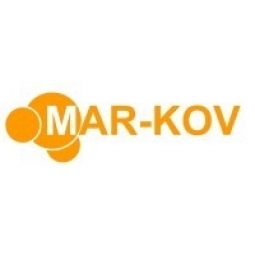技术
- 分析与建模 - 实时分析
- 功能应用 - 库存管理系统
适用行业
- 玻璃
- 零售
适用功能
- 物流运输
- 仓库和库存管理
用例
- 流程追踪
- 供应链可见性(SCV)
服务
- 测试与认证
- 培训
关于客户
Moo Thru 是一家手工冰淇淋制造商,由农民 Ken Smith 于 2010 年创立。创建该公司的目的是帮助朋友和邻居欣赏家庭、牛和农场,这些是他们喜爱的牛奶和冰淇淋的来源。 Moo Thru 是一家家族企业,Ken 的妻子 Pam、儿子 Ben 和女儿 Taylor 都参与了运营。该公司以其对质量和透明度的承诺而闻名,并且一直在扩大业务,包括于 2020 年搬迁至占地 2,200 平方英尺的新工厂。
挑战
Moo Thru 是一家手工冰淇淋制造商,在 2018 年面临着遵守《食品安全现代化法案》(FSMA) 的挑战。美国食品和药物管理局要求 Moo Thru 用更复杂的系统,可以提供对详细、实时生产和运输数据的即时访问。 FSMA 涵盖从预防性控制和标准到 FDA 强制召回和自愿召回所需的可追溯性等方方面面。 Moo Thru 需要一种解决方案,能够为有效召回提供准确信息,并防止潜在灾难,例如 2015 年 Blue Bell Creameries 爆发的李斯特菌疫情。随着 Moo Thru 业务的扩展,对准确、实时数据跟踪的需求变得更加重要。
解决方案
在审查了 100 多个不同的软件包后,Moo Thru 选择了 Mar-Kov 的 Vittles 可追溯性和物料需求计划软件。该软件提供自动化的电子批次记录、条形码库存和配方,让员工触手可及的准确实时数据。它还支持批次记录/数据的自动测试、交叉引用以及接收、生产和运输记录的检索。该软件与 QuickBooks 的集成旨在通过自动化计费为 Moo Thru 每个计费周期节省最多 2.5 小时。该软件具有可扩展性、基于云和订阅,使其成为 Moo Thru 的经济高效的解决方案。 Mar-Kov 提供的实施、培训和支持超出了 Moo Thru 的预期,员工在短短几个小时内就学会了如何使用该软件。
运营影响
数量效益

Case Study missing?
Start adding your own!
Register with your work email and create a new case study profile for your business.
相关案例.

Case Study
Improving Production Line Efficiency with Ethernet Micro RTU Controller
Moxa was asked to provide a connectivity solution for one of the world's leading cosmetics companies. This multinational corporation, with retail presence in 130 countries, 23 global braches, and over 66,000 employees, sought to improve the efficiency of their production process by migrating from manual monitoring to an automatic productivity monitoring system. The production line was being monitored by ABB Real-TPI, a factory information system that offers data collection and analysis to improve plant efficiency. Due to software limitations, the customer needed an OPC server and a corresponding I/O solution to collect data from additional sensor devices for the Real-TPI system. The goal is to enable the factory information system to more thoroughly collect data from every corner of the production line. This will improve its ability to measure Overall Equipment Effectiveness (OEE) and translate into increased production efficiencies. System Requirements • Instant status updates while still consuming minimal bandwidth to relieve strain on limited factory networks • Interoperable with ABB Real-TPI • Small form factor appropriate for deployment where space is scarce • Remote software management and configuration to simplify operations

Case Study
Digital Retail Security Solutions
Sennco wanted to help its retail customers increase sales and profits by developing an innovative alarm system as opposed to conventional connected alarms that are permanently tethered to display products. These traditional security systems were cumbersome and intrusive to the customer shopping experience. Additionally, they provided no useful data or analytics.

Case Study
How Sirqul’s IoT Platform is Crafting Carrefour’s New In-Store Experiences
Carrefour Taiwan’s goal is to be completely digital by end of 2018. Out-dated manual methods for analysis and assumptions limited Carrefour’s ability to change the customer experience and were void of real-time decision-making capabilities. Rather than relying solely on sales data, assumptions, and disparate systems, Carrefour Taiwan’s CEO led an initiative to find a connected IoT solution that could give the team the ability to make real-time changes and more informed decisions. Prior to implementing, Carrefour struggled to address their conversion rates and did not have the proper insights into the customer decision-making process nor how to make an immediate impact without losing customer confidence.

Case Study
Ensures Cold Milk in Your Supermarket
As of 2014, AK-Centralen has over 1,500 Danish supermarkets equipped, and utilizes 16 operators, and is open 24 hours a day, 365 days a year. AK-Centralen needed the ability to monitor the cooling alarms from around the country, 24 hours a day, 365 days a year. Each and every time the door to a milk cooler or a freezer does not close properly, an alarm goes off on a computer screen in a control building in southwestern Odense. This type of alarm will go off approximately 140,000 times per year, equating to roughly 400 alarms in a 24-hour period. Should an alarm go off, then there is only a limited amount of time to act before dairy products or frozen pizza must be disposed of, and this type of waste can quickly start to cost a supermarket a great deal of money.

Case Study
Supermarket Energy Savings
The client had previously deployed a one-meter-per-store monitoring program. Given the manner in which energy consumption changes with external temperature, hour of the day, day of week and month of year, a single meter solution lacked the ability to detect the difference between a true problem and a changing store environment. Most importantly, a single meter solution could never identify root cause of energy consumption changes. This approach never reduced the number of truck-rolls or man-hours required to find and resolve issues.








